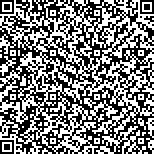| 引用本文: |
-
谢福武,王少露,谢海群,庞巧珠,符俊优.海南新村港海草床区春、秋季浮游动物粒径结构特征[J].广西科学,2024,31(1):40-51. [点击复制]
- XIE Fuwu,WANG Shaolu,XIE Haiqun,PANG Qiaozhu,FU Junyou.Particle Size Structure Characteristics of Zooplankton during Spring and Autumn in the Seagrass Areas of Xincun Port,Hainan Island[J].Guangxi Sciences,2024,31(1):40-51. [点击复制]
|
|
| |
|
|
| 本文已被:浏览 493次 下载 409次 |

码上扫一扫! |
| 海南新村港海草床区春、秋季浮游动物粒径结构特征 |
|
谢福武1, 王少露1, 谢海群2, 庞巧珠2, 符俊优2
|
|
|
| (1.海南省生态环境监测中心, 海南海口 571126;2.海南省海洋与渔业科学院, 海南海口 571126) |
|
| 摘要: |
| 为探究海草床区不同粒径浮游动物的群落结构特征及其对环境因子的响应机制,本研究分别于2022年4月和11月对海南省陵水县新村港海草床区不同性质水域的浮游动物粒径结构和重要功能类群展开调查研究,并探讨其季节性差异的影响因素。结果表明:春季共鉴定出浮游动物37科40属65种,浮游幼体20类,以小粒径的桡足类幼体/无节幼体占优势;秋季共鉴定出浮游动物23科25属37种,浮游幼体19类,以夜光虫(Noctiluca scientillans)占绝对优势。浮游动物物种数、丰度存在季节性差异,春季物种数高于秋季,湾口外海区和海草生长区最突出,以600-1 250、355-600μm的种类居多。浮游动物丰度则反之,鱼排养殖区丰度最高,以160-355、355-600μm的丰度居多。此外,春季的主要限制因子为磷酸盐、硅酸盐及悬浮物,与2 000-4 000、1 250-2 000μm的浮游动物丰度呈显著正相关性(P<0.05);盐度与2 000-4 000μm的浮游动物丰度呈极显著负相关性(P<0.01);水深则为秋季主要影响因子,与600-1 250、355-600、160-355μm偏小粒径浮游动物丰度存在显著正相关性(P<0.05)。新村港海草床区各粒径浮游动物丰度呈季节性变化,与环境因子间也存在不同程度相关性,亟需对该区域的浮游动物粒径结构进行长期监测研究。 |
| 关键词: 浮游动物 粒径结构 环境因子 海草床 海南新村港 |
| DOI:10.13656/j.cnki.gxkx.20240417.005 |
| 投稿时间:2023-11-29修订日期:2023-12-14 |
| 基金项目:海南省自然科学基金青年基金项目(321QN0960)资助。 |
|
| Particle Size Structure Characteristics of Zooplankton during Spring and Autumn in the Seagrass Areas of Xincun Port,Hainan Island |
|
XIE Fuwu1, WANG Shaolu1, XIE Haiqun2, PANG Qiaozhu2, FU Junyou2
|
| (1.Hainan Ecological Environmental Monitoring Center, Haikou, Hainan, 571126, China;2.Hainan Academy of Ocean and Fisheries Sciences, Haikou, Hainan, 571126, China) |
| Abstract: |
| In order to explore the community structure characteristics of zooplankton with different particle sizes in the seagrass bed area and its response mechanism to environmental factors,the particle size structure and important functional groups of zooplankton in different water areas of Xincun Port seagrass bed area in Lingshui County,Hainan Province were investigated and studied in April and November 2022,and the influencing factors of seasonal differences were also discussed.The results showed that a total of 65 species of zooplankton belonging to 40 genera and 37 families were identified in spring,and 20 types of planktonic larvae were identified.Small-sized copepod larvae/nauplii were dominant.In autumn,a total of 37 species of zooplankton,belonging to 25 genera and 23 families,and 19 species of planktonic larvae were identified.Noctiluca scientillans was the dominant species.There were seasonal differences in the number and abundance of zooplankton species.The number of species in spring was higher than that in autumn.The most prominent areas were the sea area outside the bay and the seagrass growth area,with the majority of 600-1 250 and 355-600 μm species.The abundance of zooplankton was vice versa,the highest abundance was observed in the fish farming areas,with the abundance of 160-355 and 355-600 μm.In addition,the main limiting factors in spring were phosphate,silicate and suspended solids,which were significantly positively correlated with the abundance of zooplankton at 2 000-4 000 and 1 250-2 000 μm (P<0.05).Salinity was significantly negatively correlated with zooplankton abundance at 2 000-4 000 μm (P<0.01).The water depth was the main influencing factor in autumn,and there was a significant positive correlation with the abundance of small-sized zooplankton in 600-1 250,355-600,160-355 μm(P<0.05).The abundance of zooplankton with different particle sizes in the seagrass bed area of Xincun Port showed seasonal changes,and there were different degrees of correlation with environmental factors.Therefore,it is urgent to carry out long-term monitoring and research on the particle size structure of zooplankton in this area. |
| Key words: zooplankton particle size structure environmental factors seagrass beds Hainan Xincun Port |
|
|
|
|
|